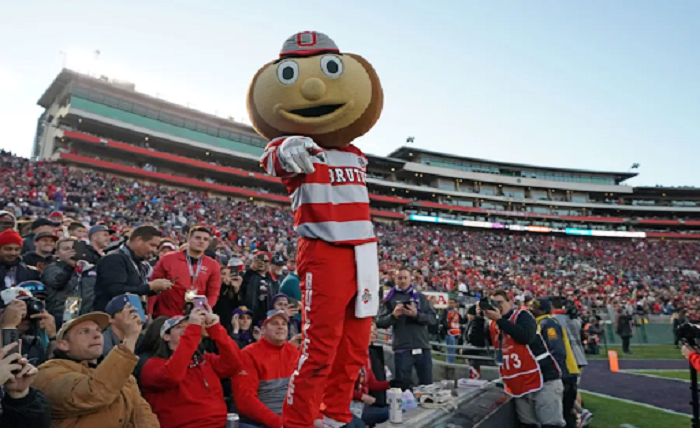College football stands out as a thrilling spectacle, weaving together school spirit, athletic prowess, and intense rivalries. It’s more than a game; it’s a tradition that unites students, alumni, and communities, creating an electrifying atmosphere.
This cultural phenomenon not only showcases emerging talent but also boosts university funding and regional pride. Dive into what makes college football an essential pillar of American life and why it continues to captivate hearts nationwide.
Deep-Rooted Tradition
The tradition of college football is so deep and influential that for many, it’s not just a sport—it’s a piece of familial heritage and an embodiment of school pride. Imagine generations growing up with the stories of legendary games and players, each victory and loss weaving into the fabric of family history.
This isn’t just about touchdowns and tackles; it’s about being part of something bigger. When schools face off in age-old rivalries, it’s a celebration of endurance and connection, reminiscent of a timeless dance between victory and defeat. These traditions catalyze school spirit, echoing chants and fight songs across campuses and filling hearts with pride.
Scholarship Opportunities
For many players, college football isn’t just a game; it’s a gateway to education through athletic scholarships. These scholarships are often transformative, providing opportunities for talented athletes, many of whom might not have the financial means to attend college.
Beyond tuition, these scholarships frequently encompass housing, meals, and academic resources, effectively lightening the financial load for students and their families.
This comprehensive support structure enables athletes to immerse themselves in both their sports and academic pursuits without the looming stress of financial burdens.
Development of Talent
In the development of talent, college football plays a pivotal role as a launching pad for future professional athletes. With access to top-tier coaching and cutting-edge facilities, student-athletes can truly hone their skills and excel.
The high level of competition in college leagues pushes athletes to refine their abilities, while rigorous training programs cultivate discipline, teamwork, and resilience—traits vital for professional success.
This nurturing ground sets the stage for transitioning to bigger leagues and handling the pressures of professional sports. It’s no surprise that many stars in the NFL first made a name for themselves in college, leveraging their experience to chart a path toward successful careers.
Media Coverage and Broadcasting Rights
The extensive media coverage of college football significantly amplifies its popularity. Major networks allocate considerable airtime to games, transforming them into highly anticipated national events that command the attention of millions.
This widespread exposure facilitates a dynamic revenue stream through lucrative broadcasting rights, substantially benefiting universities.
By showcasing their athletic programs during these televised events, universities gain the ability to captivate top-tier talent and maintain a passionate connection with their alumni and fans from coast to coast. It’s a mutually beneficial arrangement: networks enjoy sizable ratings, universities boost their financial coffers, and fans revel in the thrilling action, all from their living rooms.
Economic Impact
When college football events draw crowds, it’s not just about cheering on the home team; it’s a boon for the entire local economy. Fans pouring into stadiums mean bustling restaurants, fully booked hotels, and thriving local shops, all enjoying a surge in revenue.
This influx isn’t just limited to game days; it echoes through loyal fans sporting jerseys and memorabilia shopping year-round. Broadcasting deals and sponsorships further bolster this economic engine, channeling funds into university athletic programs.
The ripple effect supports facility upgrades and community infrastructure, creating an ecosystem where everyone—from local businesses to the academic community—thrives.
Rivalry and Competition
Rivalries in college football transcend mere matchups, evolving into grand spectacles that ignite fierce passions.
Take, for instance, the iconic clash between the Oregon Ducks and Washington Huskies, where the winning team takes home the coveted Platypus Trophy. When these two teams meet, it’s more than a game—it’s an embodiment of regional pride and bragging rights.
Their next game is on November 30th, 2024. The Washington Huskies odds are looking promising, so make sure to mark your calendars.
Emotional Connection and Stories
The allure of college football lies in its narratives that weave through the community’s fabric. It’s not just about stats and rankings; it’s the inspiring stories that capture hearts. Picture an underdog team defying expectations or an athlete overcoming personal hurdles—moments like these forge deep connections with audiences.
Fans find themselves emotionally invested, rooting for more than just a win but for the triumph of the human spirit. These stories are a potent thread, bonding communities and transforming casual followers into lifelong devotees.
Showcase of School Spirit
When you attend a college football game, it’s impossible to overlook the vibrant sea of school colors and the infectious energy that fills the stands. This isn’t just about showing loyalty—it’s about fostering a community united by pride and spirit.
Picture the excitement as mascots rally the crowd and fight songs echo through the stadium. These moments forge a deeper connection among fans, creating a sense of belonging that’s more than individual; it’s collective.
This dynamic atmosphere transforms games into unforgettable experiences, reinforcing school pride and making every fan feel like an integral part of the team’s journey.



